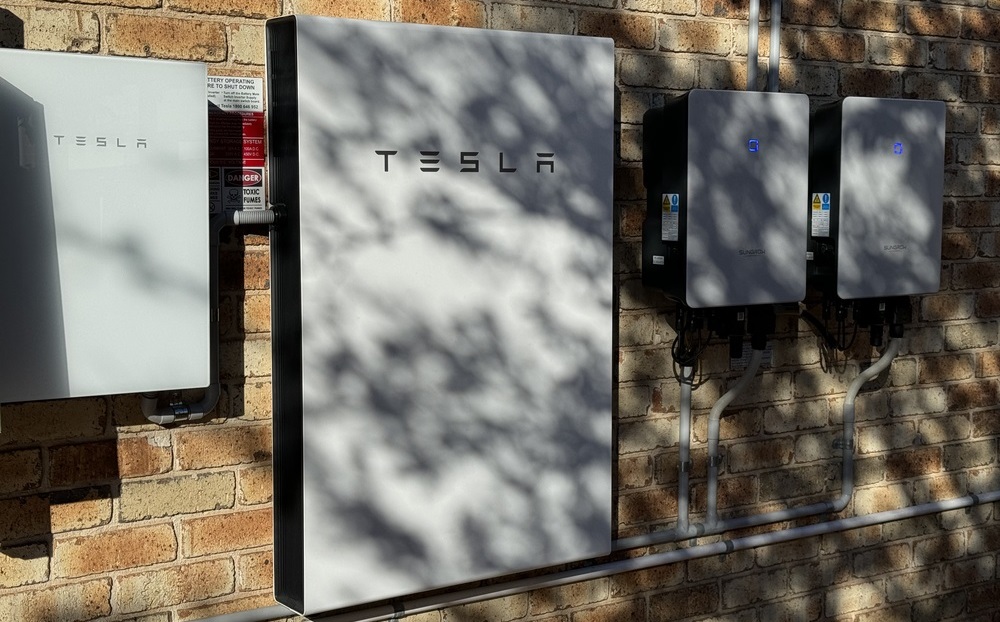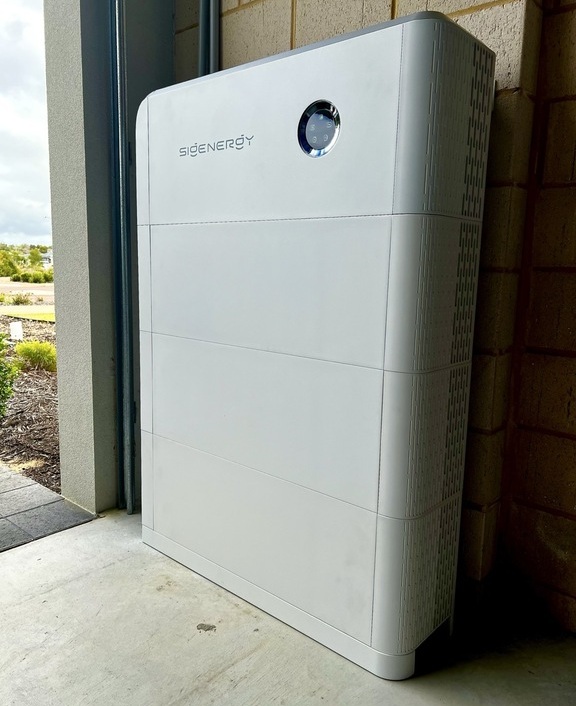Battery Rebates in Australia: Current Offers by State and Territory
Last Updated: 2nd Jul 2025 By Finn Peacock, Chartered Electrical Engineer, Fact Checked By Ronald Brakels
This page covers current rebates, grants, and interest-free loans available across Australian states and territories that make battery storage systems more affordable and improve payback times.
Federal Battery Rebates
The Cheaper Home Batteries Program is a $2.3 billion subsidy scheme designed to reduce home battery installation costs by around 30%. It applies to new battery systems between 5–50kWh usable capacity that are either connected to an existing solar system or installed with a new solar system.
The maximum possible subsidy is ~$372 per usable kWh of battery storage. The subsidy amount will decrease at the end of each year until the end of 2030 when the scheme finishes. It’s similar to the existing Small-scale Renewable Energy Scheme (SRES) for solar. It’s not necessary to join a VPP to get the battery price reduction, but batteries must be VPP-capable. The federal rebate can be combined with the WA state rebate. The rebate is available to homeowners, small businesses, and community facilities.

Image Credit: DJM Electrical
State/Territory Battery Rebates and Loans
The only state or territory battery rebate is the WA rebate. WA also offers zero-interest loans to help with the purchase of batteries. The ACT doesn’t have an incentive that lowers the cost of installing a battery, but they do offer a zero-interest loan to purchase them.
NSW had a state battery rebate, but that has now effectively ended. But they do offer a rebate for joining a Virtual Power Plant (VPP). It is around $55 per usable kWh.
Here’s how they compare:
| State / Territory | Program Name | Type | Value |
|---|---|---|---|
| New South Wales | NSW VPP incentive | Payment for joining VPP | Up to ~$1,550 |
| ACT | Sustainable Household Scheme | Zero-interest Loan | Up to $15,000 |
| Western Australia | WA Residential Battery Scheme | Rebate + Zero-interest Loan | Rebate: Up to $1,300 ($3,800 Horizon area) Loan: Up to $10,000 |
New South Wales
Program: NSW VPP Incentive
Incentive Value: NSW will provide a payment to batteries that join a VPP. It is worth around $55 per kWh. For a 10kWh battery it will be about $550. Batteries must have from 2-28kWh of usable capacity to receive it. Off-grid systems can’t join VPPs, so it’s not available to them.
Eligibility: The battery must be on the Clean Energy Council’s approved list, be VPP capable, have a minimum operating temperature range from -10 to 50 degrees, and have a 10 year warranty that promises it will retain at least 70% of its original capacity and provide a minimum of 2,800kWh of output per kWh of usable storage.
Important Notes: Previously, the NSW VPP incentive required existing batteries to still have 6+ years remaining on their warranties to receive the VPP payment. This is no longer mentioned on the NSW government page on the incentive, so it may not be a requirement anymore.
Contact: Visit the NSW Government website or consult with SolarQuotes for details on VPP compatibility.

Image Credit: Natural Solar.
Australian Capital Territory (ACT)
Program: Sustainable Household Scheme
Loan Value: Zero-interest loan from $2,000 to $15,000, repayable over up to 10 years.
Eligibility: Open to ACT residents for energy-efficient upgrades like battery storage, solar, and EV charging infrastructure.
Requirements: Loan capped at $15,000 for specific products. You may be required to attend an energy efficiency workshop.
Additional Rebates: Concession card holders may qualify for up to $5,000 in rebates through the Home Energy Support Program.
Process: Approved applicants receive a QR code for installation validation.
Contact: Call 13 22 81 or email [email protected].
Western Australia
Program: WA Residential Battery Scheme
Rebate Value: $130 per kWh up to $1,300 for Synergy customers in the southwest of the state, and $380 per kWh up to $3,800 for Horizon Power customers in regional WA.
Loan Option: Zero-interest loans from $2,000 to $10,000 will be available to help with the purchase of batteries. These loans can also be used to cover the cost of solar if it’s installed at the same times as a battery. Households must have a combined income of under $210,000 to be eligible. Loan repayments are made over 10 years.
Eligibility: Open to all residential properties in Western Australia, including those used for home businesses.
Conditions: The batteries must:
- Have a minimum capacity of 5 kWh
- Be VPP-ready and must join a VPP
Two new VPPs will be introduced to allow for the requirement to join one:
- Battery Rewards in the southwest Synergy area, and…
- Community Wave in the Horizon area.
The scheme will provide up to 100,000 rebates. The program is being rolled out in rounds.
Example
Total Rebates: A SigenStor battery with 7.8kWh of usable capacity can receive the following subsidies in Perth or elsewhere in the Synergy area:
- A WA state subsidy of $1,014 ($130 x 7.8kWh = $1,014)
- A federal subsidy of around $2,574 (~$330 x 7.8kWh = $2,574)
Together, these subsidies total $3,588. If the installed cost of the battery would have been $10,000 they will reduce its cost to $6,412.
Payback Period: If the battery is used at a capacity factor of 80% and provides an average of 4kWh during the peak period of Synergy’s Midday Saver time-of-use tariff and 2.24kWh during the shoulder period, then — provided it’s mostly charged with solar power — it would reduce electricity bills by $2.45 per day or $894 per year. This would result in a simple payback time of just over 7 years. This is an excellent payback time and well under the battery’s 10-year warranty.
If you’re unable to obtain a WA rebate and only use the federal rebate, then the simple payback time would be 8 years and 4 months.

Generous subsidies plus high electricity prices make WA a very cost-effective location for batteries. Provided you can afford it, you may want to take advantage of this by installing one larger than in the example above.
Contact: Full details and updates can be found on the WA Government website.